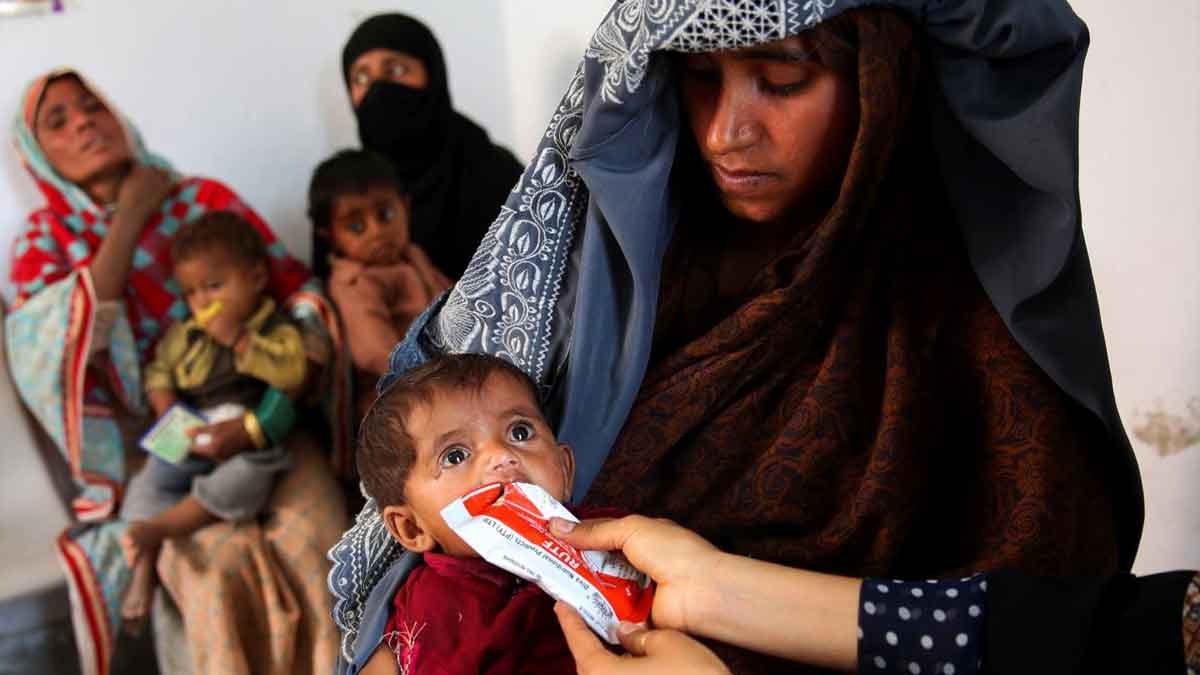Universally, 149.2 million children under five years of age have stunted growth in 2020 and Pakistan shared 6.9% of the global burden.
The Pakistan Economic Survey, 2021-22 launched on Thursday revealed that due to poor diets and nutrition risks lock individuals and countries into long-term disadvantages.
Healthy diets provide a strong foundation for the development of the physical, social, cognitive, and productive traits of individuals, which result in a more economically productive and socially active nation.
Conversely, insufficient and unhealthy dietary practices lead to impaired physical growth, low educational attainment, low labor productivity, sub-optimal cognitive development, compromised health, reduced earning potential, and increased risk of diseases.
Read more: 48 Ehsaas Nashonuma Centres established to combat stunted growth
A long-term, effective and sustained multi-sectoral nutrition program is required for improving nutrition needs.
Moreover, nutrition interventions geared towards access to diverse, adequate, and safe food, ideal health, and a healthy environment ensuring safe water, hygiene, and sanitation facilities are the vital pathways to avert malnutrition and recover the potential of the country’s most valuable asset, humans.
Pakistan’s nutrition commitments shown in the Nutrition for Growth (N4G) Summit, 2020, indicate the country’s pledge to fight malnutrition and immediate measures towards attaining the WHA targets set for 2025 and SDGs (Sustainable Development Goals) for 2030.
Meanwhile, special multi-sectoral nutrition steps are being taken both at federal and provincial levels in different sectors to address stunted growth on a sound basis using a system reforms approach.
Food availability and consumption food availability, the prime pillar of food security, portrays a complete picture of the country’s food supply available for human consumption in a specified time period.
Pakistan produces adequate food to fulfill the food requirements of its population, with adjustments in imports and exports.
During FY2022, the obtainability of major food items remained almost stable.
However, a slight decrease in the availability of milk, cereals, and edible oils was seen, while the availability of fruits and vegetables increased considerably from the previous years.
Fish, eggs, and sugar availability almost remained constant.
The availability of per capita calories stayed above the minimum calorie requirements of the general population, just like during the last years.





















